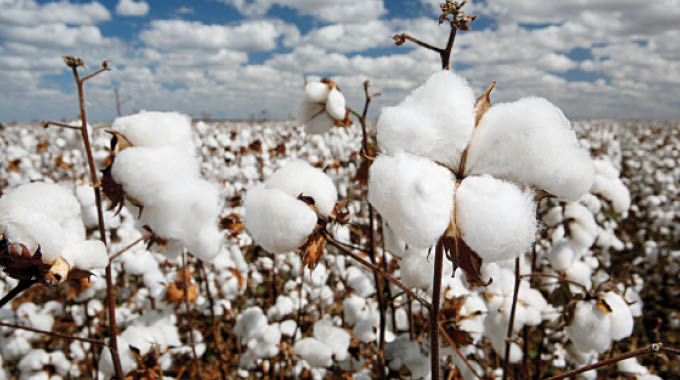
Harare Bureau
COTTON farmers in Gokwe District in the Midlands Province, say they expect a bumper harvest this season despite a dry spell experienced in November and December last year.
Cotton is one of Zimbabwe’s major cash crops alongside tobacco and is an important source of foreign exchange.
It is mostly grown by small-holder farmers and of late Cottco has been making efforts to rope in commercial farmers with irrigation facilities to also grow the crop.
Farmers in Gokwe which account for about 60 percent of the country’s cotton production, said the current state of their crop has led them to expect better yields.
Many of the fields visited by our Harare Bureau over the weekend showed that the crop had well developed bolls, raising prospects for better harvest.
“We still need the rains but even without getting meaningful rains, the crop will still be good,” said Mr Stanley Makuvaza a small-scale farmer in Gokwe-Nemangwe.
Another farmer Mr Nicholas Jeri said despite the dry spell which also affected germination, prospects for good yields were high.
“The plants have produced a lot of bolls and this will translate to better yields,” said Mr Jeri who planted a new hybrid seed.
Cotton introduced hybrid seeds last year, which have potential to improve yields by as much as 45 percent when compared with the traditional varieties.
The hybrid seeds also require less water compared to non-hybrid varieties.
Mr Dumisani Silandeni said he was expecting to harvest not less than 200 bales (4 000 kilogrammes) from his 10-hectare farm.
“We got all the inputs on time.
“The chemicals are also coming on time. I am very confident that this year’s yields will be good,” said Mr Silandeni.
Small-scale farmers are benefiting from the Government’s free inputs programme meant to boost output.
The programme which was launched in 2015, has brought outstanding results and has been on an upward trend.
From about 28 000 tonnes in 2015 — the lowest output in nearly two decades — production steadily rose to 142 000 tonnes in 2018, but fell to about 70 000 tonnes last year due to drought.
Cotton had lost its glitter since farmers had shunned the crop due to lack of funding and poor prices offered by producers.
As a result of inadequate levels of inputs and agronomic support by merchants which led to low yields, side-marketing and poor debt recovery in the past few years, the industry almost collapsed.
Poor debt recoveries also resulted in the crop’s contractors perceiving high levels of risk and consequently cutting back on inputs financing.
